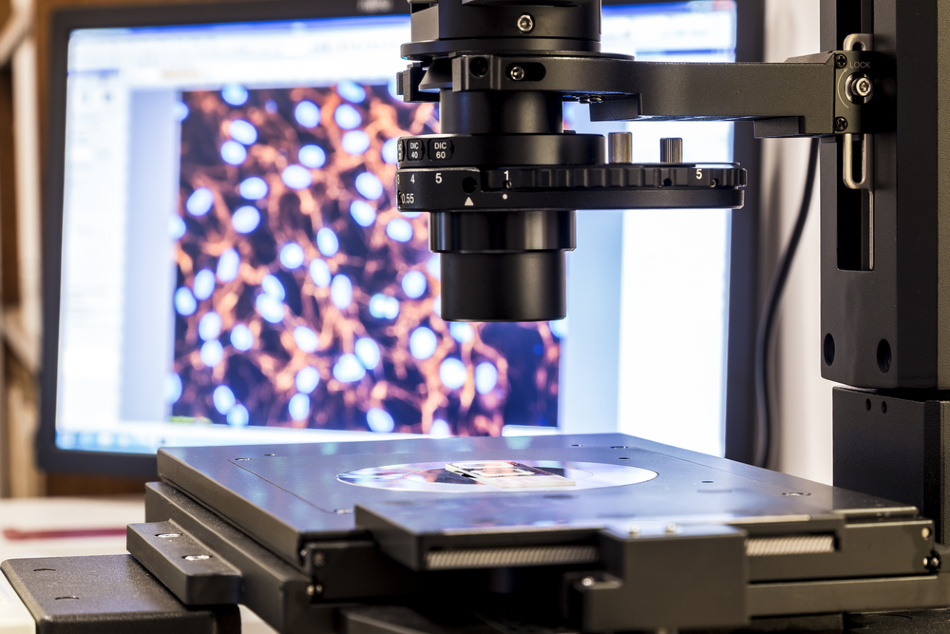
Image Credit: dominika zara/Shutterstock.com
When the atomic force microscope (AFM) was invented in 1986, a commercial need was born (Binnig, Quate and Gerber, 1986). Atomic force microscopy (AFM) utilizes an extremely sharp-tipped probe – mere nanometers thick at the end – attached to a precisely sensitive cantilever and sensor. The manufacture of these cantilevers has been made possible due to serious advances in the field of nanomechanics.
Applications of Atomic Force Microscopes
The introduction of such precise instruments quickly led to their use in a wider variety of applications. For example, AFM cantilevers have been used as transducers in physical and chemical measurements, converting forces into electricity for highly sensitive sensor functions (Wachter and Thundat, 1995). In this sense, they are referred to as nanomechanical sensors.
More recently, AFM cantilevers have been used in biochemical applications as nanomechanical sensors. In 2000, a team of Swiss researchers at IBM’s Zurich Research Laboratory and the University of Basel published findings which “demonstrate the wide-ranging applicability of nanomechanical transduction to detect biomolecular recognition” (Fritz et. al, 2000).
Click here to find out more about how sensors have been used in atomic force microscopes
AFM Cantilevers as Nanomechanical Sensors
It became apparent in the early 2000s that AFM cantilevers could be used as chemical and biochemical nanomechanical sensors through coating the probe tip with various chemical substances to measure different chemical and biochemical reactions with the surface of the specimen at hand.
The Swiss researchers used cantilevers as nanomechanical transducers, converting the all but imperceptible forces in stress changes on the surfaces of proteins and DNA into electric signals which could be interpreted by computers. By carefully monitoring differentials between cantilevers set up in an array formation, the team were able to positively identify molecular recognition signals for the material under inspection.
Another recent study from the University of Basel researchers remarked on the numerous crossover applications for AFM cantilevers, particularly as nanomechanical sensors (Lang et. al, 2002). The importance of arranging cantilevers in an array, so that at least one other sensor could be used as a reference point for the primary measurement, was stressed again.
Reasons given for this include the possibility of cantilevers being manufactured with slight deviations or imperfections. Due to the requirement for incredibly high precision, various methods were put forward to ensure accurate measurements are taken from AFM cantilevers used as nanomechanical sensors. For example, making sure that experiments are performed in highly controlled laboratory environments.
By arraying multiple cantilevers, reliable information can be extracted from these nanomechanical sensors. Not only can they be used for surface imaging as local probes in AFM, but they also become useful nanomechanical tools used for sensing the biochemical, chemical and physical properties of materials (Lang et. al, 2002).
The development in recent decades of AFM has, therefore, had numerous knock-on effects for other research fields and industries. This kind of interdisciplinary serendipity – where an expansion in measuring techniques necessitated a rapid progression in nanotechnology, and the technological results of that rapid progression then introduced new opportunities in diverse fields such as biomechanics – can be expected to speed up as more technology is developed.

 How can sensors help to improve the use of atomic force microscopes?
How can sensors help to improve the use of atomic force microscopes?
References and Further Reading
Binnig, G., Quate, C.F. and Gerber, C. (1986). Atomic Force Microscope. Physical Review Letters, 56(9), pp.930–933.
Fritz, J., Baller M., Lang, H.P., Rothuizen, H., Vettiger, P., Meyer, E., Güntherodt, H., Gerber, C., Gimzewski, J. (2000). Translating Biomolecular Recognition into Nanomechanics. Science, 288(5464), pp.316–318.
Lang, H.P., Hegner, M., Meyer, E. and Gerber, C. (2002). Nanomechanics from atomic resolution to molecular recognition based on atomic force microscopy technology. Nanotechnology, 13(5), pp.R29–R36.
Wachter, E.A. and Thundat, T. (1995). Micromechanical sensors for chemical and physical measurements. Review of Scientific Instruments, 66(6), pp.3662–3667
Disclaimer: The views expressed here are those of the author expressed in their private capacity and do not necessarily represent the views of AZoM.com Limited T/A AZoNetwork the owner and operator of this website. This disclaimer forms part of the Terms and conditions of use of this website.